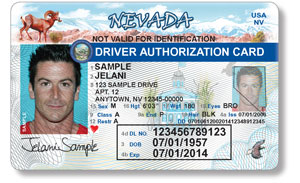
Nevada driver authorization card applicants struggle with written test
Majority of Nevada driver authorization card applicants flunk written test
The majority of Nevada driver authorization applicants continue to flunk the written test.
On Jan. 2, Nevada began accepting accepting driver authorization card applications from individuals that are illegally in the country and living in Nevada.
Las Vegas News at Las Vegas World News
The driver authorization cards grant immigrants the privilege of driving legally on Nevada public streets and highways, and thousands of immigrants flooded the local DMV officers on Jan. 2.
Applicants for Nevada driver authorization cards are required to show both proof of identify and proof of residency. A full list of acceptable items for driver authorization cards can be found on the Nevada DMV website.
Statistics released three days after the the launch by the DMV stated that approximately 71 percents of the applicants failed to meet the requirements. Most of failures were attributed to applicants failing the written portion of the test.
The struggle with passing the written portion of the test has continued for Nevada immigrants.
Approximately 75% fail test for Nevada driver authorization card
Statistics from the Nevada DMV for the the reporting period of Jan. 2 through Feb. 4., as reported by the LVRJ, state that approximately 3,500 immigrants have received driver authorization cards. An additional 1.656 permits were granted, and the failure rate hovers at approximately 75 percent.
Overall, only a small percentage of the estimated 60,000 eligible immigrants have actually applied for a driver authorization card.
Factoring in the slightly more than 13,000 applicants that have applied means that approximately 21% of all eligible immigrants have actually applied for a driver authorization card. Less than 8.5% of all eligible immigrants, approximately 5,000, are currently using a Nevada driver authorization card or permit.
The high failure rate is troubling. Even more disturbing is the extremely low number of Nevada immigrants that have applied for a drivers authorization card, especially since a considerable amount of time, money and lobbying was spent to pass the bill, in an effort to embrace the immigrant community.
Do the low numbers indicate a genuine fear of failure perhaps due to a language barrier, or do they indicate that the Nevada immigrant community is not concerned with adhering to the driving laws, and ultimately other laws, in Nevada and in the United States.
Related articles







 Follow
Follow


